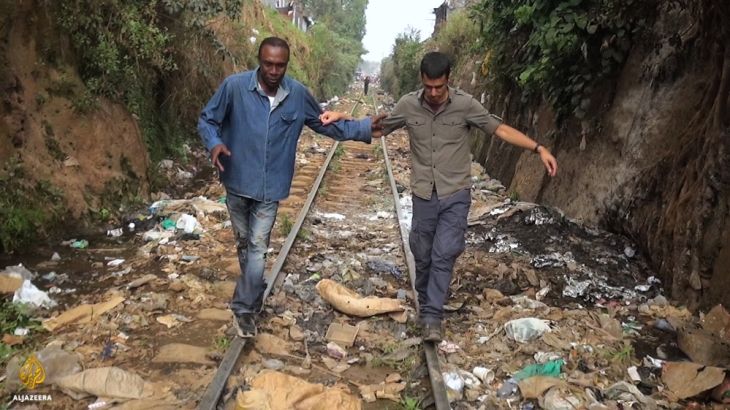How to deal with Kibera’s ‘flying toilets’
Streets in Nairobi slum are littered with human waste, prompting locals to develop innovative solutions to the problem.

Nairobi, Kenya – Wherever you walk in Kibera, the Kenyan capital’s biggest slum, there’s one golden rule that must always be observed, local resident Abdul Abdallah says.
“Don’t step on any plastic or paper bag you see on the road.”
Keep reading
list of 4 itemsWhat happens when activists are branded ‘terrorists’ in the Philippines?
Are settler politics running unchecked in Israel?
Post-1948 order ‘at risk of decimation’ amid war in Gaza, Ukraine: Amnesty
Among the endless piles of rubbish that line Kibera’s streets are what are known as “flying toilets”.
“People poo in the bags at night, and they tie it and throw it and throw it away,” Abdallah tells Al Jazeera.
The flying toilets are a symptom of Kibera’s lack of a proper sewage system.
Hardly any in this impoverished corner of Nairobi has the luxury of a toilet inside their home. Some have an outdoor toilet, shared between multiple dwellings, but these are simple pit latrines that need to be emptied – usually into the open sewers outside.
“You remove it from your face and put it to another person’s face,” Harun Wainaina, another local resident, says with a bitter laugh.
Inside his compact – but neat and tidy – home, his two children play video games. He says he’s had to take them to the doctor on more than one occasion to treat diseases they picked up after playing in the streets.
“If you go to the hospital, you will find many cases like this,” Wainaina tells Al Jazeera. “This is a crisis.”
Al Jazeera spent time with several of Kibera’s residents, examining the effect of the slum’s waste crisis and the innovative solutions some locals have developed to tackle the problem. Watch the video at the top to find out more.